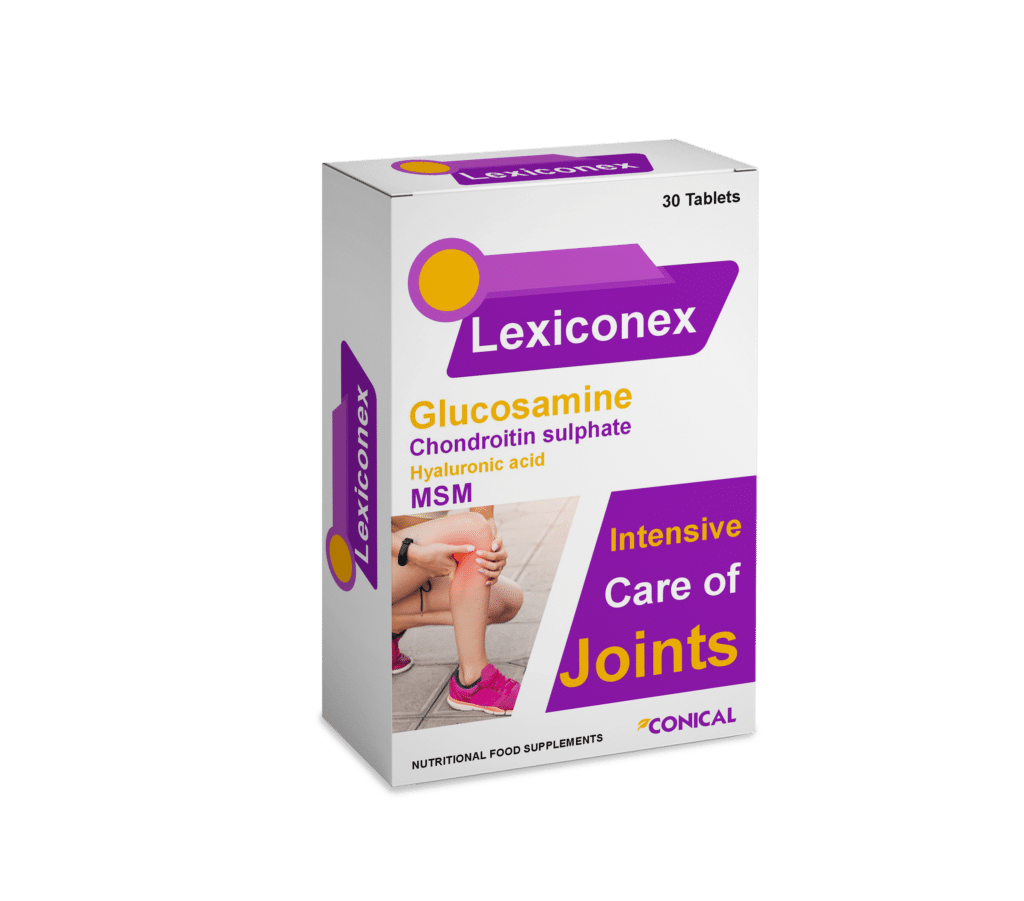







Glucosamine, Chondroitin Sulphate, Hyaluronic Acid, MSM tablets are to be taken as a supplemental source in symptomatic relief of osteoarthritis as an adjunct therapy.
In patients with impaired glucose tolerance, monitoring of the blood glucose levels and, where relevant, insulin requirements is recommended before start of treatment and periodically during treatment.
In patients with known risk factor for cardiovascular disease, monitoring of the blood lipid levels is recommended, since hypercholesterolemia has been reported in a few cases in patients treated with glucosa-mine.
A report on exacerbated asthma symptoms triggered after initiation of glucosamine therapy has been described (symptoms resolved after withdrawal of glucosa-mine). Asthmatic patients starting on glucosa-mine should therefore be aware of potential worsening of asthma symptoms.
In very rare occasions (<1/10.000) such patients have experienced cases of edema and/or water retention. This can be attributed to the osmotic effect of Chondroitin sulfate.
Lexiconex tablets should be taken by oral route only.
1-2 tablets per day or as directed by a dietician or Physician.
Common side effect includes Headache, Tiredness Nausea, Abdominal pain, Indigestion, diarrhea, and Constipation. Uncommon side effect includes Rash, Itching and Flushing. Very rarely side effects like Urticaria, Eczema, Pruritus Allergic reaction and edema may be observed.
Store below 300 C temperature and protect from direct sunlight.
Keep out of reach of Children.
3 x 10 Alu/Alu blister pack.
Lexiconex tablets are available in an Alu/Alu blister of 10 tablets. Such 03 blisters in a unit carton with package insert.
Contact us directly to receive full information on the product, the formulation, the science behind it, stability data, and more. Our Business Development Manager is a click away.
Questions are useful tools, they open lines of communication; give us information; improve interactions, facilitate analysis, and many more.
A pharma CMO is a special kind of an organization, offering contract manufacturing services to pharmaceutical companies for various kinds of drug formulations.
Reduce overall costs and time to market :
Contract manufacturers already have the needed infrastructure and technical staff, so working with a CMO or CDMO can decrease the cost of manufacturing your pharmaceutical products.
Scalability and flexible production capacity :
You can produce what you need when you need it without worrying about excess capacity. Additionally, CMOs understand the importance of quality and compliance, so you don't have to sacrifice safety for scalability.
Save on upgrading and maintaining equipment :
If you have your manufacturing facility, you’ll have to pay to upgrade your equipment as technology advances—which can get expensive. A CMO/CDMO’s only function is to make and distribute products, so part of their core business responsibility is to update their equipment whenever needed and perform maintenance.
Ease supply chain issues :
During the pandemic, there were several instances of supply chain issues, including medicine shortages. CMOs are generally better equipped than startups to handle a supply chain crisis.
Bandwidth to focus on core competencies
When your company resources aren’t directly allocated to manufacturing and distribution, you have more time to focus on other tasks, like marketing your new drug, researching, or working on drug discovery.
We have 7+ manufacturing sites with a minimum of WHO GMP certification and other country-specific approvals like NAFDAC approved, PPK Kenya Approved, TFDA Tanzania Approved, EU-GMP Approved.
We have below manufacturing capacity:
For Tablet, Capsule, and soft gel: up to 1 million units per shift
For Syrup: up to 0.05 Million per shift
For Ampoule and Vial: up to 0.1 million units per shift
For Ointment and Cream: up to 0.1 million units per shift
For Suppository: 0.1 Million units per shift
